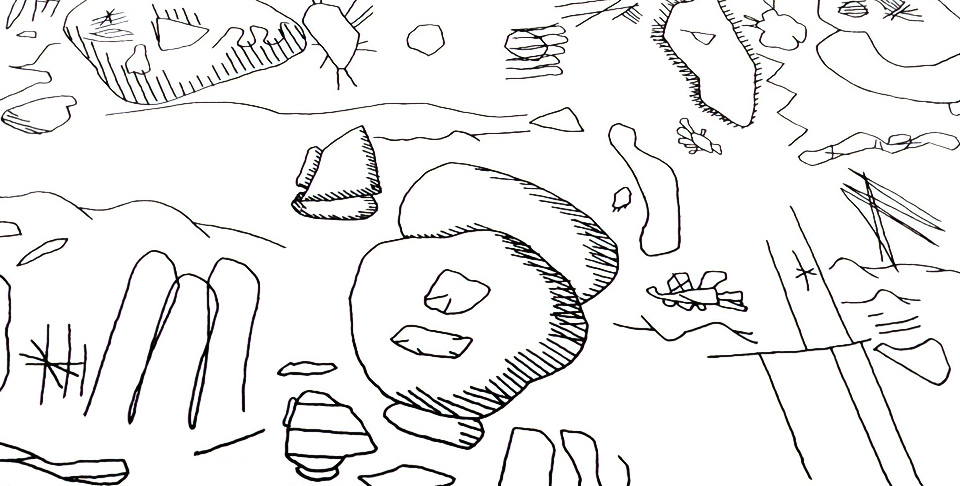Harold liked to joke that he would be the “first artist to have a posthumous exhibit of new work.” He based this on the fact that his algorithmic art program, AARON, could continue to run after his death. During the same interview in which he first launched this bon mot, he differentiated the novelty of work from the process which produced it:
[T]he program is being creative to a degree that when it does a drawing, it does a drawing that nobody has ever seen before, including me. I don’t think it is currently as creative as I am in writing the program. I think for a program to be fully creative, in a more complete sense, creative, it has to be able to modify its own performance.
Harold was much more interested in the process that produced an image than whether the image was new. Throughout his career, his understanding of machine creativity evolved to explicitly include himself as part of this process. In his essay “Driving the Creative Machine” (2010), Harold elaborated on the creative relationship between himself and AARON:
Creativity – this particular example of creativity – lay in neither the programmer alone nor in the program alone, but in the dialog between program and programmer; a dialog resting upon the special and peculiarly intimate relationship that had grown up between us over the years. (p.9)
[T]he best-designed set of mechanisms won’t accomplish much without an engine to drive them, and that the engine is provided for a creative human agent by a lifetime of experience of the world and of self in that world. . . Is it possible to come from that position and still believe in the possibility of machine creativity? Certainly! I believe that my dialog with AARON is an example of machine creativity, albeit a small one. (p.16)
Over a span of almost fifty years, Harold experimented with the amount of control he gave to AARON in their creative dialogue. For example, at many points during Harold’s career, AARON was responsible for drawing lines and coloring them in, but by 2012, Harold had reclaimed the latter. At no point, however, was AARON ever talking to itself; certain roles were always reserved for Harold, such as building plotters, selecting images to print, adjusting colors, and changing AARON’s code according to his interests as the artist.
To take Harold’s quip about posthumous new work seriously is to misinterpret his relation ship with AARON. Whether AARON produced new work was not Harold’s focus. Rather, the process – the creative dialogue – that produced the work was what Harold pursued throughout his career. Now that Harold is gone, those of us who would run AARON can only generate parts of this dialogue. The resulting images may be ones nobody has ever seen before, but they are not Harold Cohen’s art.






